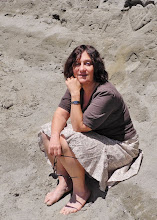
Milton likes ginger-ale. That was what the sign read above Milton's bed at the retirement home. A few days before the legendary conductor's death, in 2006, Ilkka and I went to visit Milton Katims to pay our respects. We found him curled up in bed, asleep like an infant. The retirement home personnel appeared oblivious to the renown of this great individual.
I often drift back to my memories of Milton Katims, as I enjoyed a strong connection to him during his post Seattle Symphony years. I think when Milton said, "I love you, Margie" that he meant it, and I feel honored to this day, for Milton Katims was an esteemed artist and dear friend.
There were the times we'd play chamber music together. Although I had the distinct impression that tennis came first, the duos of Mozart and Rolla, and trios of Beethoven followed a close second. Because Ilkka and I settled in Seattle long after Milton's "long over-due" departure with Seattle Symphony, our relationship was free from baggage. Ilkka and I were the new kids on the block; Milton and Virginia welcomed us with open arms, inviting us into their home, and spoiling us with attention and flattery. I think deep down Milton was always rooting for me. Not just for my playing, which he championed, but I believe he applauded my independent streak for establishing myself in Seattle; creating my own world in the musical community. I had cultivated a life apart from the local symphony, and owed no favors to any single individual.
Ilkka and I understood Milton's reverence for Toscanini. While not just a few colleagues snickered at Milton's musical concepts handed down by the great Master himself, Ilkka and I scratched our heads wondering why more of our violist colleagues hadn't rushed to study with Milton. After all, Milton Katims was violist par-excellence, a legend across the world. At the time we settled in Seattle—in the mid 80's—local violists were scarce commodities, and a fine violist was an oxymoron.
Ilkka and I were not privy to the intense drama that played out during Milton's last years as Music Director of Seattle Symphony. But initially, during Ilkka's role as concertmaster for SSO, musicians from the Katims era insisted on clean, bowed parts, devoid of every bowing Milton Katims had suggested. My husband insisted on seeing Milton's bowed parts before placing his own, and recognized in Milton's markings, the refined musical subtleties of a first class string player. Ilkka took the clean parts and, unbeknown to his colleagues, added Milton's markings, but in his own hand.
"Gosh! These bowings are wonderful!" raved the musicians, unaware that they were the exact bowings they had railed against.
Nobody can dispute that Milton Katims lived a long, productive life. Our friendship lasted over two decades. My conversations with Milton after 2004 grew particularly animated when I revealed to him that Ilkka and I had suffered discrimination from the local SS. "Unbelievable," he said, anger in his voice. "What do you mean they won't let you play, not even as an extra?"
"They won't," I said.
"And Ilkka?"
"Maybe they'd hire him to sweep the floors."
Milton didn't laugh. "They're cutting off their noses to spite their faces," he shouted. "Don't those (and here, he used a colorful word) understand that Seattle is not New York? It's not as if great violinists are a dime a dozen—"
I didn't have an answer.
"Stand up for yourself, Marjorie."
"Yes, Milton—"
"I love you," he said.
Milton Katims, David Tonkonogui and me at Seattle Art Museum

No comments:
Post a Comment